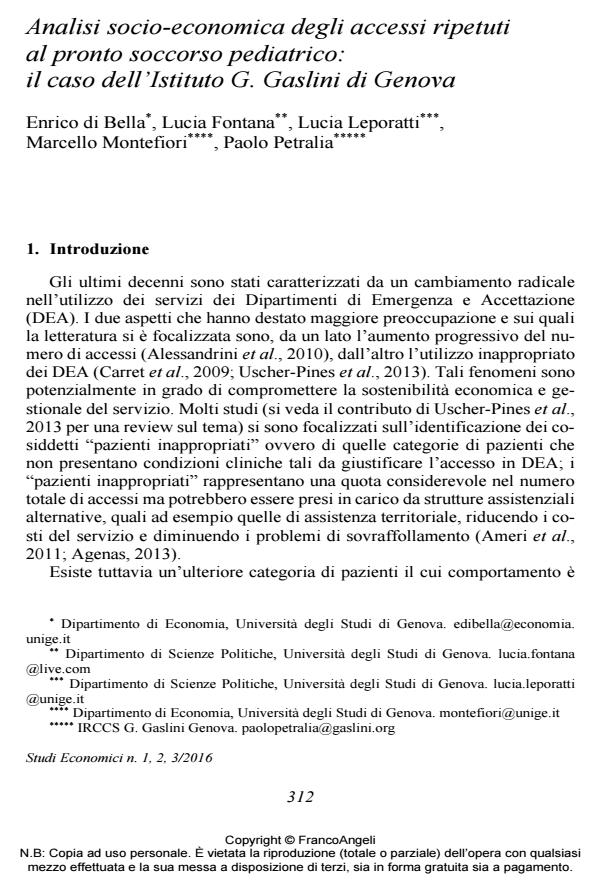Analisi socio-economica degli accessi ripetuti al pronto soccorso pediatrico: il caso dell’Istituto G. Gaslini di Genova
Titolo Rivista STUDI ECONOMICI
Autori/Curatori Enrico Di Bella, Lucia Fontana, Lucia Leporatti, Marcello Montefiori, Paolo Petralia
Anno di pubblicazione 2017 Fascicolo 2016/118-119-120
Lingua Italiano Numero pagine 16 P. 312-327 Dimensione file 273 KB
DOI 10.3280/STE2016-118017
Il DOI è il codice a barre della proprietà intellettuale: per saperne di più
clicca qui
Qui sotto puoi vedere in anteprima la prima pagina di questo articolo.
Se questo articolo ti interessa, lo puoi acquistare (e scaricare in formato pdf) seguendo le facili indicazioni per acquistare il download credit. Acquista Download Credits per scaricare questo Articolo in formato PDF

FrancoAngeli è membro della Publishers International Linking Association, Inc (PILA)associazione indipendente e non profit per facilitare (attraverso i servizi tecnologici implementati da CrossRef.org) l’accesso degli studiosi ai contenuti digitali nelle pubblicazioni professionali e scientifiche
The use of Emergency Departments (EDs) is continuously increasing and the challenge of guaranteeing an efficient and effective service is threatened by the phenomena of inappropriate and frequent use. Most of the literature on the topic focuses on adult population; in this study we analyse the issue of frequent use of ED among paediatric patients, with the aim of detecting the most significant socio-demographic and clinical predictors of frequent use of emergency services. Results, based on data collected from the ED of one of the most important paediatric Italian Hospital, show that children aged less than 12 months, foreign and chronic patients (particularly those suffering from mental illness, respiratory diseases and circulatory system problems) have a higher risk of becoming frequent and highly frequent ED users. It emerges that frequent users, although they only represent the 8% of total number of accesses, they account for 19% of total costs.
Parole chiave:Paediatric emergency department, Frequent user, Healthcare system sustainability, Inappropriate use, Risk factors, chronic conditions
Jel codes:H51; I11, I12, C50
Enrico Di Bella, Lucia Fontana, Lucia Leporatti, Marcello Montefiori, Paolo Petralia, Analisi socio-economica degli accessi ripetuti al pronto soccorso pediatrico: il caso dell’Istituto G. Gaslini di Genova in "STUDI ECONOMICI " 118-119-120/2016, pp 312-327, DOI: 10.3280/STE2016-118017